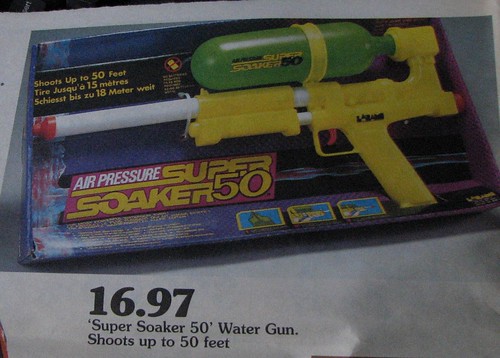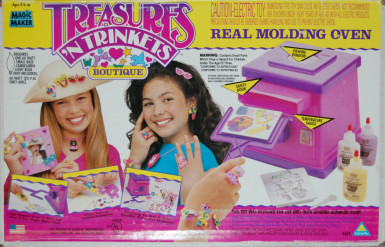
Kids today have it too easy. Forget the value of dedication and hard work that so defined our generation. Their need for instant gratification continuously pushes aside their pioneering spirit of industry and diligence.
That's right, I'm talking about water guns. In our day, we knew the meaning of painstaking commitment to getting the job done. There was none of this "press the trigger and water sprays" nonsense. We would pump those Super Soaker air-pressure chambers until our fingers blistered, but it would all be worth it to spray our friends standing fifty yards away.
With parents and lawmakers increasingly conscious of how violent toys and media impacted the impressionable youth of America, these troublingly accurate imposters were on the way out. Water guns needed a new, updated image to distance themselves from their connotations of violence and war. What they needed was a light-hearted, neon-colored remastered water gun prototype with a distinctly non-military name.
At the prime meeting of timing and technology, inventor Lonnie Johnson and toy-maker Larami teamed up to produce a new water gun that fully diverted from the warlike water weapons of the past:
Super Soakers had a distinctly different tone from preceding water guns, and the ad conveys the odd sense of whimsy associated with their product. Though the commercial prominently features the theme of revenge, we can only assume that stereotypical 90's rich girl Buffy really had it coming. Also, who could resist the throwback to the Blues Brothers in their execution of their masterminded pool party-ruining scheme? This is 90s advertising as its finest.
Revolutionary in design, Super Soakers required their wielders to pump pressurized air into a separate chamber on the water gun that would build up the power to shoot water at great distances. While updated models abandoned this arm-exhausting mechanism, a great deal of the fun was contingent on that re-arming period. You felt that you had really earned that shot. You worked hard for it, and the results were spetacular. Plus, there was that awesome water bottle chamber with super-accesible fillability.
Unfortunately, while Super Soakers of today may possess greater power and precision, their R&D department's insistence on churning out novel products have led them to...well, new lows. In an effort to keep this blog in the PG range, I am not going to comment on the following video. Rather, I leave it to you to deduce from it what you will. Let's just say it stirred up quite a bit of controversy among children's advocate groups for its...provacative implications. I'm going to leave it at that.
Check it out:
Super Soaker Evolutionary Family Tree
AV Club Spoof of Hasboro Oozinator Marketing Meeting







